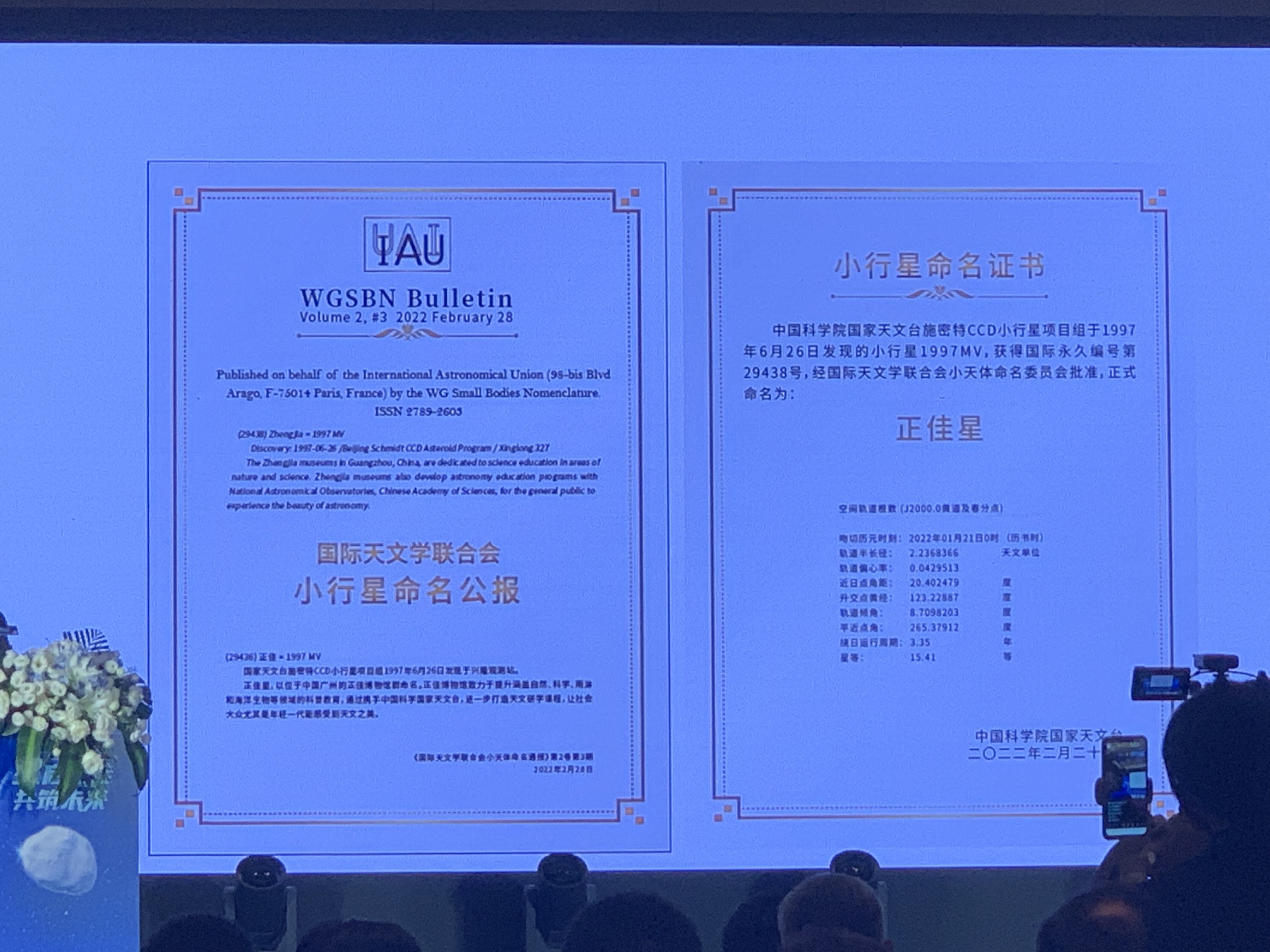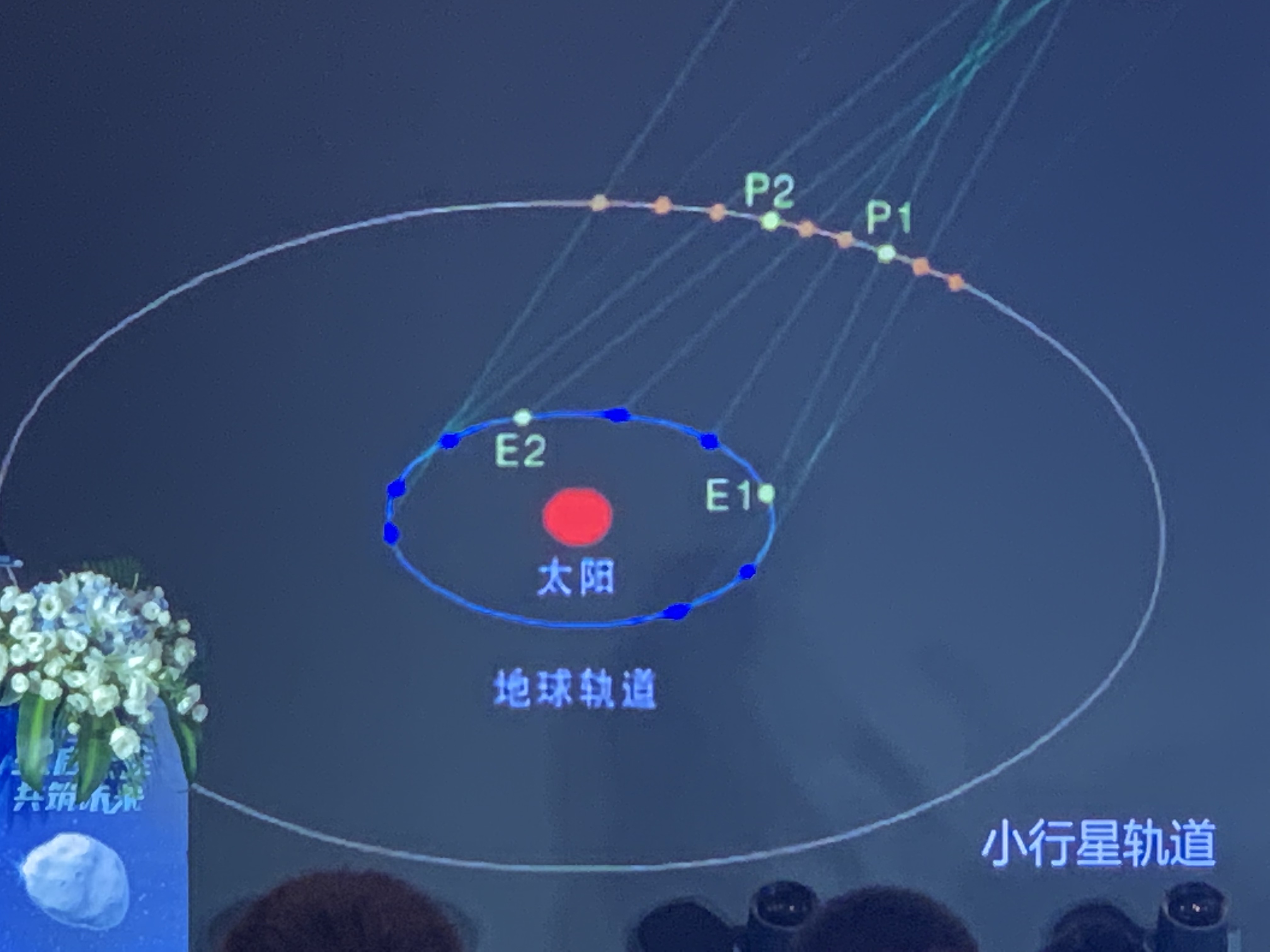There is another new planet named Guangzhou in Guangzhou, 29438 asteroid officially named "Zhengjiaxing"
Author:Guangzhou Daily Time:2022.09.08
Guangzhou has another planet named "settled" in Guangzhou. On September 8th, asteroid No. 29438 officially named "Zhengjiaxing". This is the asteroid of the International Astronomical Federation that is named after corporate groups in public welfare education globally. This is not only the commendation and affirmation of the international and domestic and educational circles to the development of the Zhengjia Museum in Guangzhou and Tianhe Road Business District in the development of civic science and education. Expect and encouragement.

On June 26, 1997, a small asteroid was recorded at the Xinglong Observation Station of the National Observatory of Hebei Province, which was recorded in the book, and obtained permanent and officially number 29438. This year, with the approval of the Names of the International Astronomy Federation, the asteroid was officially named "Zhengjiaxing".

The former deputy director of the National Observatory, Dr. Xue Suijian, the chief researcher of the 30 -meter telescope R & D research group shared the story of "Zhengjiaxing" discovered at the scene. According to Dr. Xue, as early as 1997, a celestial body code -named B06988 was confirmed to be a newly discovered asteroid, and obtained the tentative number 1997mV of the International Asterior Star Center. Since then, the scientific research group has strengthened the tracking and observation of 1997MV and "captured" it many times in the future. In the end, the accumulated observation data based on BATC can accurately determine its running orbit. The International Small Star Center officially announced that the 1997MV permanently number is 29438, and its naming right belongs to the National Observatory Schmeid Small Star Discovery Group.
On February 28 this year, with the approval of and released a bulletin notification international community with the Names of the International Astronomy Federation, the asteroid 1997mv (No. 29438) was officially named "Zhengjiaxing".
On the same day, the Zhengjia Science Museum and Zhengjia Astronomical Museum of the Tianhe Road Business District announced the official opening of the museum. The total area of Zhengjia Science Museum covers an area of 10,000 square meters. It is located on the sixth and seventh floor of the North Atrium of Zhengjia Square. Concepts, integrating entertainment, science, education, and interaction. A total of six theme exhibition areas, fantasy secrets and scientific classrooms are set up. The era of full immersive scientific exhibition area, scientific cutting -edge aerospace command center, and solar systems, classic scientific reappearance of the Pizza tower and the Newton's apple tree "descendants" in history.
Guangzhou Daily · Xinhuacheng reporters learned that the "Science Museum" and "Astronomical Museum" will combine the original "Natural Museum", "Oceani Museum" and "Rain Forest Hall" to form a central area of Guangzhou's center. The most rich scientific education base, fully support the construction of the "Museum of Museum" in Guangzhou in 2025.
There are multiple landmarks and characters in Guangzhou "God"
Earlier, Guangzhou also had multiple planets named it. In 2011, the International Small Star Center released the No. 75550 Bulletin, announcing that the asteroid No. 273836 was officially named: Sea Gallery. The English name is "Hoijyusek", which uses Cantonese Yale Pinyin. It is described in the communiqué in the international asteroid center: the sea pearl is a boulder in the Pearl River. Guangzhou people commemorate the sea pearls, not only named the urban area on the Pearl River as Haizhu District, and within the core area of Beijing Road, there are also place names such as Yingzhu Street, Lianzhu Street, Haizhu Plaza, Haizhu Bridge, Haizhu Road, etc. It is people's remote memories of this magical sea pearl stone, and it is also a distant memory of this disappeared "Shijima".
Once the name "Suiqi Middle School", "Middle Star" and "Sea Delta", such as the asteroids, such as Guangzhou Ziyao Quanzhi, also named "Ye Quanzhixing" floating between Mars and Jupiter's orbit in 2017 as "Ye Quanzhi". "Congratulations" to this doctor. "Ye Quan Zhixing" No. 10280 Yequanzhi, on March 2, 1981, was discovered by American astronomer Bobbas at the Saidinquan Observatory, and the temporary number was 1981 EA43.
It is reported that the International Astronomical Federation (IA) International Asterior Star Center generally releases freshly baked "Asteroids" every month. Except for "Ye Quanzhixing", the naming of "Jian Sanjiang Star", "Huangjiang Chuanxing" and "Qiao Dongxing" are related to China. Among them, Huangjiangchuan and Qiao Dong are scientists participating in the Chang'e -2 project.
Wen, Tu/Guangzhou Daily · Xinhua City Reporter: Quanjie Correspondent: Zhou Peilin, Yang Fan Guangzhou Daily · Xinhuacheng Editor: Li Lin
- END -
These 10 emerging technologies may change our future

Today (June 29) is the National Popular Science Action Day. All sectors of society...
100 -day action | Corporate business abide by law, data security and unsatisfactory

On September 1, 2021, the Data Security Law of the People's Republic of China was ...